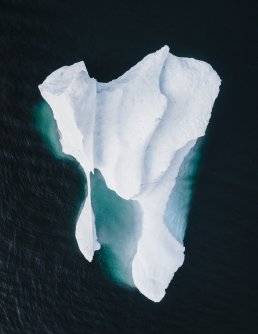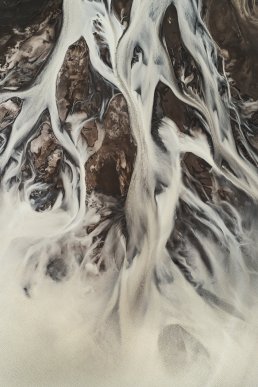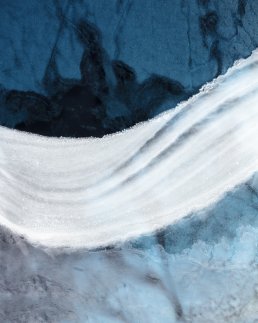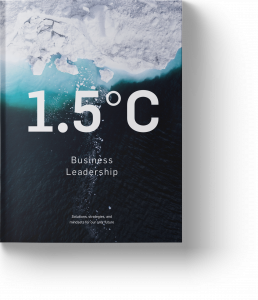Munich-based photographer Tom Hegen released a set of aerial images capturing the beauty seen from above. His work is featured in the 1.5°C Business Leadership report. You can read on to learn more about the artist and his work.
The photos explore human impact on Earth, including landscapes shaped by human activity and vulnerable to climate change. His work is a stark reminder about how we interact with the world around us, and what is at risk. Below are the pictures that were showcased in the report with each of them having their own and unique story.
The Iceberg Series II
A visual study of shapes, patterns and luminosity on Icebergs in the Ilulissat Icefjord, Unesco World Heritage. Located on the west coast of Greenland, 250 km north of the Arctic Circle, Greenland’s Ilulissat Icefjord is the sea mouth of Sermeq Kujalleq, one of the few glaciers through which the Greenland ice cap reaches the sea. Sermeq Kujalleq is one of the fastest and most active glaciers in the world. It annually calves over 35 cubic kilometers of ice. That is 10% of the production of all Greenland calf ice and more than any other glacier outside Antarctica.

The Salt Series
The production of sea salt is one of the oldest forms of human intervention in natural spaces. Sea salt comes from natural evaporation of seawater out of artificial created ponds. The color of the water indicates the salinity of the ponds. Micro-organisms change their hues as the salinity of the pond increases. The colors can vary from lighter shades of green the vibrant red. Although the sea salt industry covers large areas around the world, the salt ponds and marshes are an important habitat for many species like birds, shellfishes or micro-organisms.

The River Veins Series
As the glaciers in Iceland melt, ice blue water veins their way across black volcanic sand, creating most peculiar patterns in the landscape. Those scenes have an element of duality – it is hard to tell whether a picture was taken from a macro perspective or from a small airplane around 3000 feet in the air.

The Two Degree Celsius Series
Global sea level rise will be one of the major environmental challenges of the 21st Century. One of the leading causes of sea level rise is the melting of ice from glaciers and ice sheets. The Greenland ice sheet alone contains enough water to raise global sea levels by more than 7 meters. The Arctic is the fastest warming place of this planet, providing the first indication of how climate change is having an impact. It’s melting surface is one of the starkest examples of global climate change. Below two degrees Celsius above pre-industrial levels is the agreed goal signed by 197 countries at the Paris climate agreement in 2015 to limit global warming to avoid disastrous consequences of climate change. The two°degrees Series explores the effects of global warming on the Arctic Ice Sheet.




